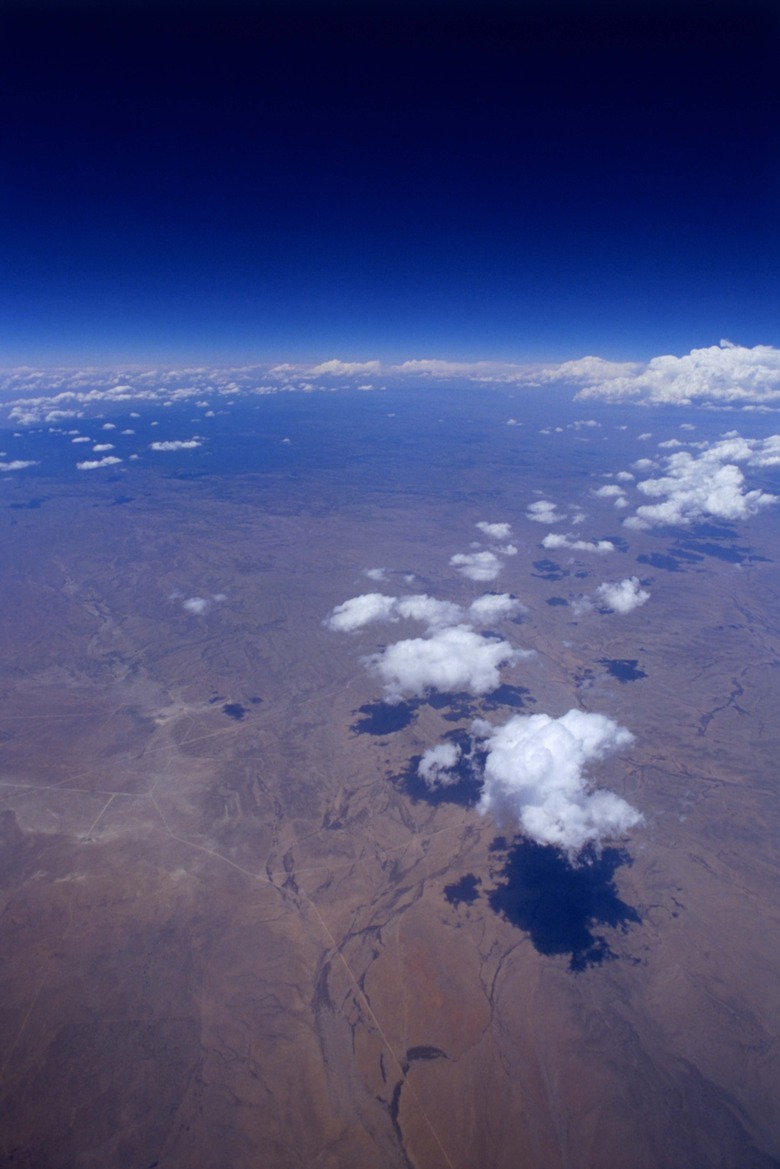Nitrogen Gas Vs. Carbon Dioxide
Earth's atmosphere is made of much more than oxygen. Sure, that's what your lungs are aiming for when you take a deep breath, but there are other gases in the atmosphere, too. In fact, the vast majority of the air around you isn't oxygen. It's mostly nitrogen, with a little bit of carbon dioxide, or CO2, in there as well. What do these gases do, and why do they make up most of the atmosphere?
Nitrogen vs CO2
Nitrogen vs CO2
Oxygen only comprises around 21% of the Earth's atmosphere. Nitrogen, argon, and carbon dioxide make up most of the other 78%. But of that 78%, it's not an even split. The vast majority of that is nitrogen, with argon and carbon dioxide comprising much less. Argon is roughly 0.93% of the air around you, while carbon dioxide is a paltry 0.04%. Other gases are present, but they are rare.
So what's the difference between nitrogen and carbon dioxide? Why are they important? They are important because they, like oxygen, play a big role in enabling life on our planet. However, those roles are very different from one another.
Nitrogen
Nitrogen
Nitrogen is found in the atmosphere as a gas. It has the chemical formula of N2, meaning that each nitrogen molecule is made of two nitrogen atoms held together by a triple covalent bond. This means that they share three pairs of electrons. This is a pretty strong bond, and most life forms on Earth are unable to break that bond.
Nitrogen makes its way out of the atmosphere and into your food as a nutrient through bacteria. Plants require nitrogen to grow, but they can't access the nitrogen in the atmosphere. That's where bacteria come in. Specialized bacteria, called nitrogen-fixing bacteria, live in soil where plants take root. They are able to take in atmospheric nitrogen and convert it into organic nitrogen. This means that they take the nitrogen molecule, break it apart, and convert it into ammonia, or NH3. In this form, it is a nutrient plants can use.
Once plants take it up, then nitrogen becomes available for humans. Nitrogen is an important nutrient in the human diet as well, and we get it from our food.
Carbon Dioxide
Carbon Dioxide
Carbon dioxide, while much scarcer in the atmosphere than nitrogen, is just as important. Carbon dioxide has more than one job in the atmosphere. Its first job is to provide carbon for photosynthesis. Autotrophs, like plants and algae, require carbon to make their own food. By taking in carbon dioxide from the atmosphere, plants are able to use the carbon in those molecules to make glucose (C6H12O6) during the process of photosynthesis. The plants can then use glucose as an energy source.
Gaseous carbon dioxide is an important reservoir for the carbon plant life needs. Because glucose is stored in plants, this means it is an important energy source for humans as well. In the human diet, glucose is simply referred to as sugar or carbohydrates.
Carbon Dioxide and the Greenhouse Effect
Carbon Dioxide and the Greenhouse Effect
Carbon dioxide also has another important job in the atmosphere. It is a greenhouse gas, which means it is able to trap heat in the atmosphere. The term greenhouse gas often has a negative connotation, because the term appears most often in conversations about global warming. But it is the intensification of the greenhouse effect that is negative, not the effect itself.
In fact, life as we know it would not exist on our planet without the greenhouse effect. Carbon dioxide is able to create the greenhouse effect because of the way the molecule is shaped. While oxygen and nitrogen are perfectly symmetrical, carbon dioxide is not. This means that oxygen and nitrogen don't trap heat, but carbon dioxide does.
This happens because heat rising from the Earth's surface will interact with carbon dioxide, causing it to vibrate and thus trap some of that heat, holding onto it a little longer before letting it go. In this way, carbon dioxide helps the atmosphere act as a blanket that keeps the surface warm. If the blanket becomes too thick, though, things will get hot fast, but without it, the planet would freeze.
Cite This Article
MLA
Brennan, John. "Nitrogen Gas Vs. Carbon Dioxide" sciencing.com, https://www.sciencing.com/nitrogen-gas-vs-carbon-dioxide-5919/. 20 October 2021.
APA
Brennan, John. (2021, October 20). Nitrogen Gas Vs. Carbon Dioxide. sciencing.com. Retrieved from https://www.sciencing.com/nitrogen-gas-vs-carbon-dioxide-5919/
Chicago
Brennan, John. Nitrogen Gas Vs. Carbon Dioxide last modified March 24, 2022. https://www.sciencing.com/nitrogen-gas-vs-carbon-dioxide-5919/
